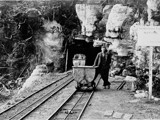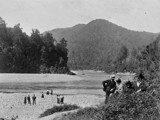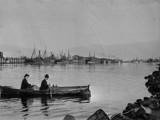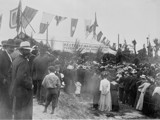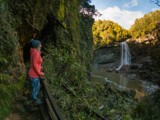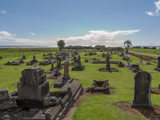History
According to many tribal narratives the Māori canoe Tāwhirirangi, brought the legendary chief Ngāhue to the West Coast of the South Island around 950 AD.
Archaeological evidence suggests the first Māori settlers in Buller Kawatiri lived a coastal existence, exploring the mountainous, bush clad areas in search for and trading of pounamu (greenstone).
The first European discovery of the West Coast in 1642 sparked an era of exploration, sealing and the search for land and minerals.
The first recorded ship to ever enter the Buller river was a sealing schooner the Three Brothers, which sounded the bar and sailed up the river in 1844.
The 1840’s was a time of discovery, with organised parties of surveyors and geologists exploring the district. Trips were undertaken by noted European explorers including Charles Heaphy, William Fox and Thomas Brunner.
It is thought that the Buller Kawatiri River was named (by either Heaphy or Fox) after Charles Buller, a director of the New Zealand Company. Gold was discovered in the Buller River in the late 1850’s and the confirmation of the existence of gold signaled the start of the gold rush and the establishment of Westport. The hunt for gold eventually gave way to the hunt for coal, a mining heritage that remains a dominant industry force today. Though the economic focus of the district remains on extractive industry, the focus has shifted to include agriculture, horticulture and tourism. A range of books are available on the history of Westport and the Buller district.
Contact the Buller District Library for further information, or check out our on-line library catalogue to see what is available.
Local government history
From 1853 to 1876, the current area of Buller District was administered as part of the Nelson Province. With the Abolition of Provinces Act in 1876, much of the current area of Buller District was then administered in the newly created bodies of Buller County and Inangahua County.

